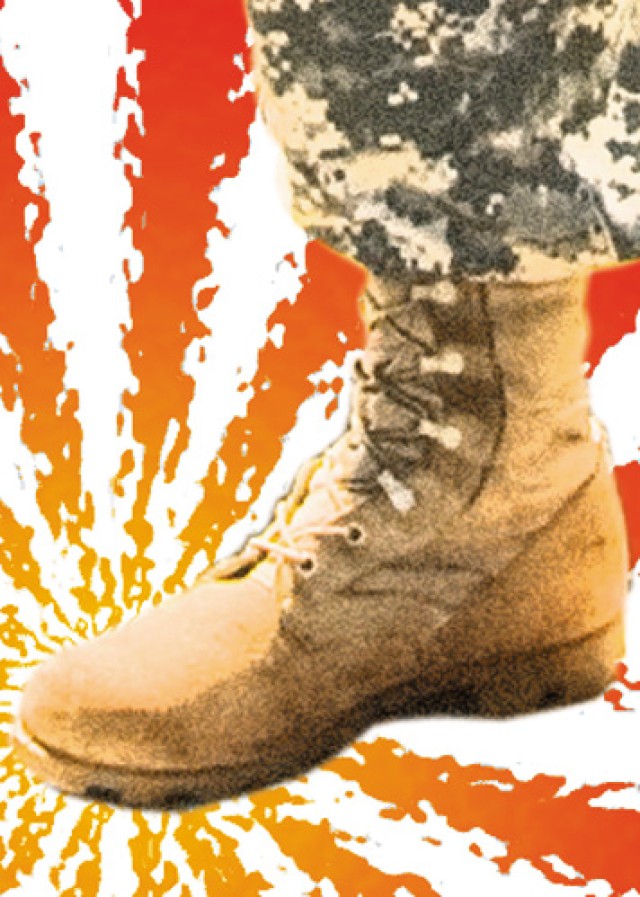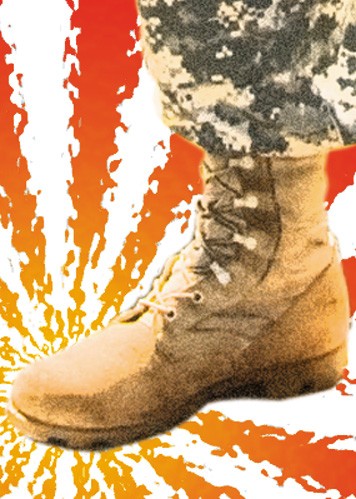Foot blisters can cause extreme discomfort and reduce concentration. They can prevent Soldiers from completing marches, lead to days of limited activity or even affect a Soldier's ability to respond to threats. In the field, poorly managed blisters can lead to more serious health problems such as infection.
A blister is a raised spot on the skin filled with liquid. Foot blisters can occur when slight movements of the foot in a shoe or boot produce friction between the skin and sock. This friction is made worse by the moisture produced by sweating.
The best way to avoid blisters is to wear synthetic-blend socks (some synthetics are polyester, acrylic and nylon) versus cotton socks. Synthetic-blend socks help to pull water away from and reduce friction on the skin. These socks also help reduce blisters that can occur during physical training.
The Joint Services Physical Training Injury Prevention Work Group recommends wearing a thin pair of synthetic-blend socks as a liner under boot socks. Boot socks made of wool and polyester blend also help pull water away from the skin and reduce friction.
If socks have large toe seams, wear the socks inside out to prevent blisters on the tops of toes. Changing wet socks for dry socks also helps to reduce foot blisters.
Protecting or "shielding" areas of the foot with a high potential for blister formation is another preventive approach. To protect areas prone to blisters, apply a piece of moleskin cut slightly larger than areas of intense friction or sensitive skin. Alternatives to moleskin are the "liquid" bandages which dry to form a tough protective covering on the skin.
For a small blister or "hot spot," take the following self-care steps:
Don't pop blisters-your own skin is the best protection for healing.
Place a small moleskin "doughnut" around the blister to protect it from further irritation.
For large, painful blisters, take the following self-care steps:
Wash your hands and clean the blister area with soap and water.
Heat the tip of a clean, sharp pin over a flame until it glows red and allow it to cool, or wipe it with rubbing alcohol.
Puncture a small hole at the edge of the blister.
Drain fluid with a gentle pressure, but leave the "roof" of the blister intact.
Apply an antibiotic ointment to the blister and cover with a clean dressing such as a band-aid.
Apply moleskin over the dressing to keep the dressing in place and protect the blister from further irritation.
Clean the area and replace the bandage dressing daily.
Go to sick call if any of the following occur:
Fluid or pus oozes out of the blister.
There is redness around the blister.
Blisters are so bad you can't wear shoes or boots.
Pain is so bad you cannot perform your duties.
Blisters are not getting better with self care.
For more information on blister prevention and treatment, check these sources:
Soldier Health Maintenance Manual, http://chppm-www.apgea.army.mil/documents/TG/TECHGUID/TG272.PDF, page 64.
The Mayo Clinic, blister first aid, http://www.mayoclinic.com/health/first-aid-blisters/WL00008.


Social Sharing